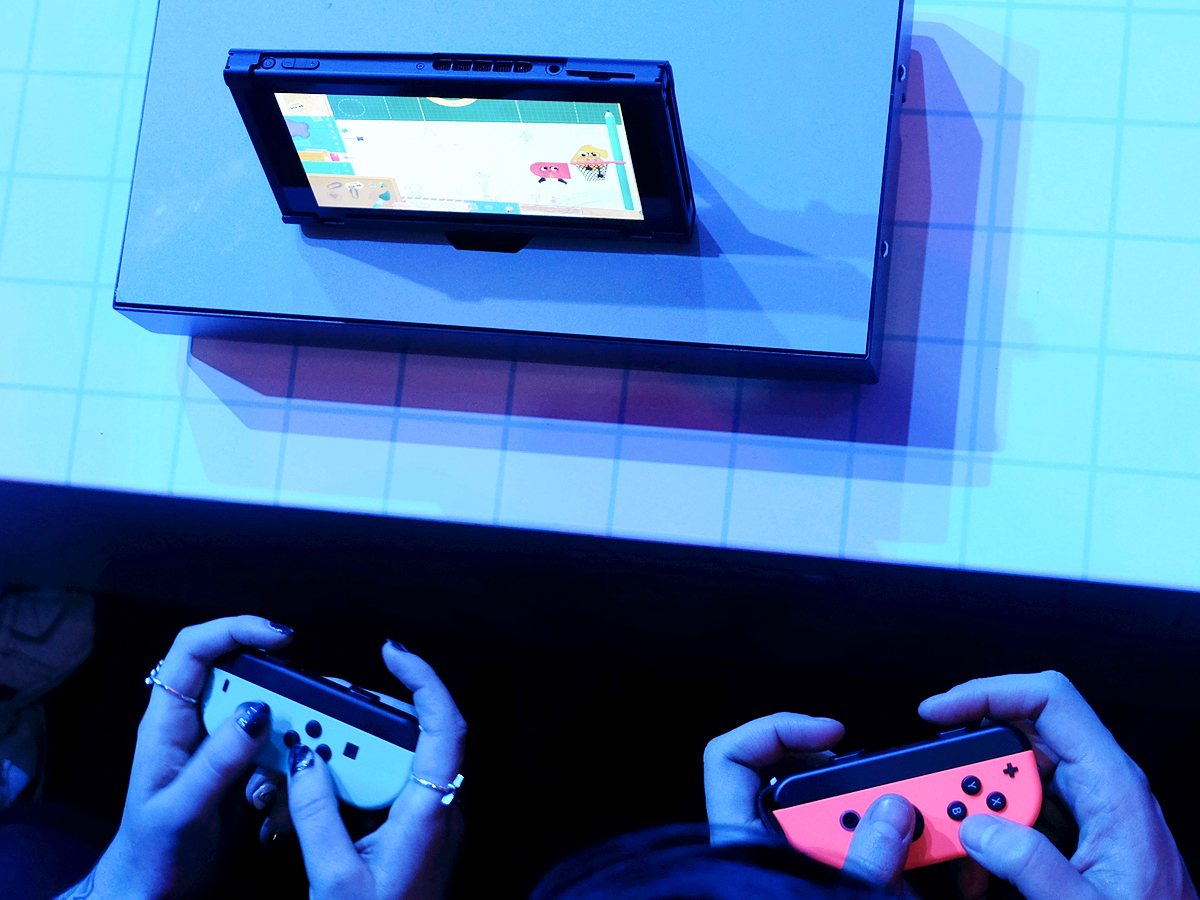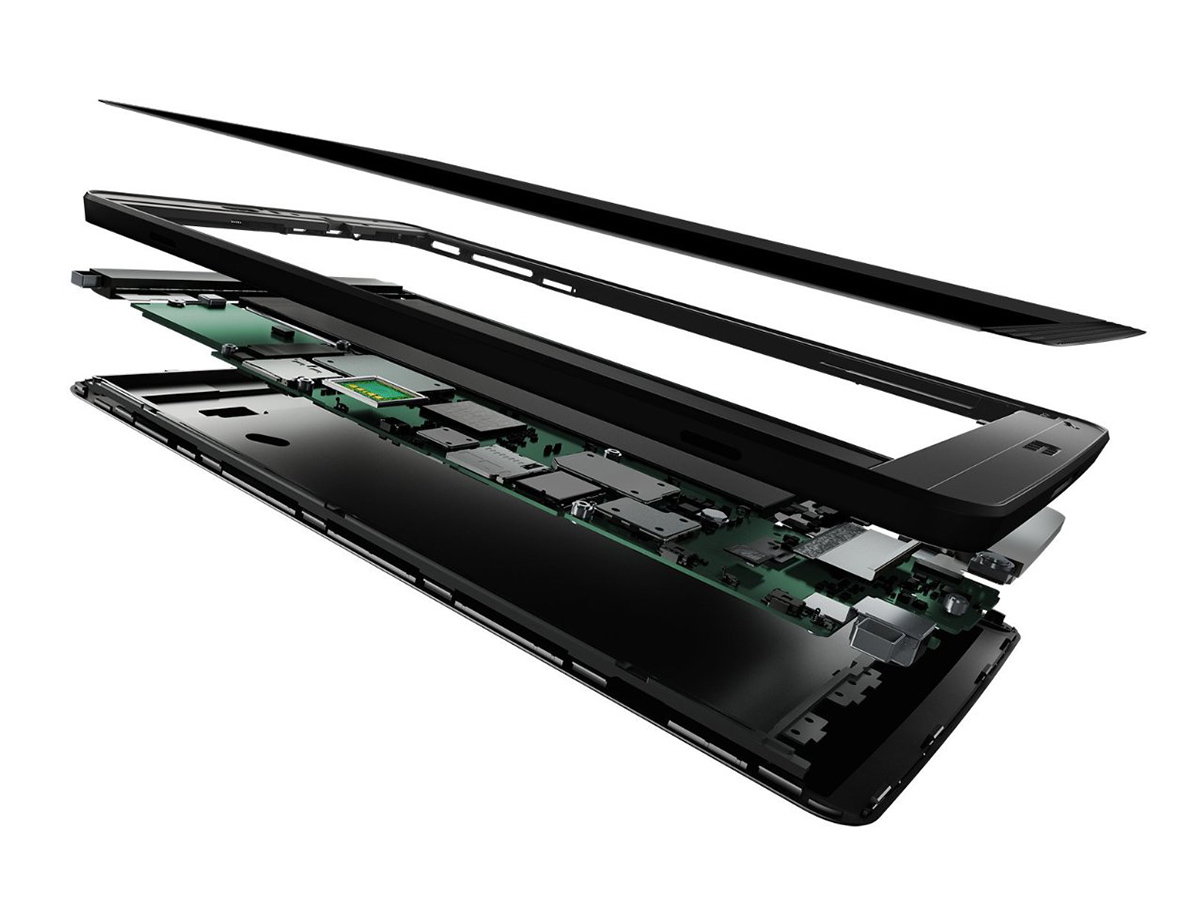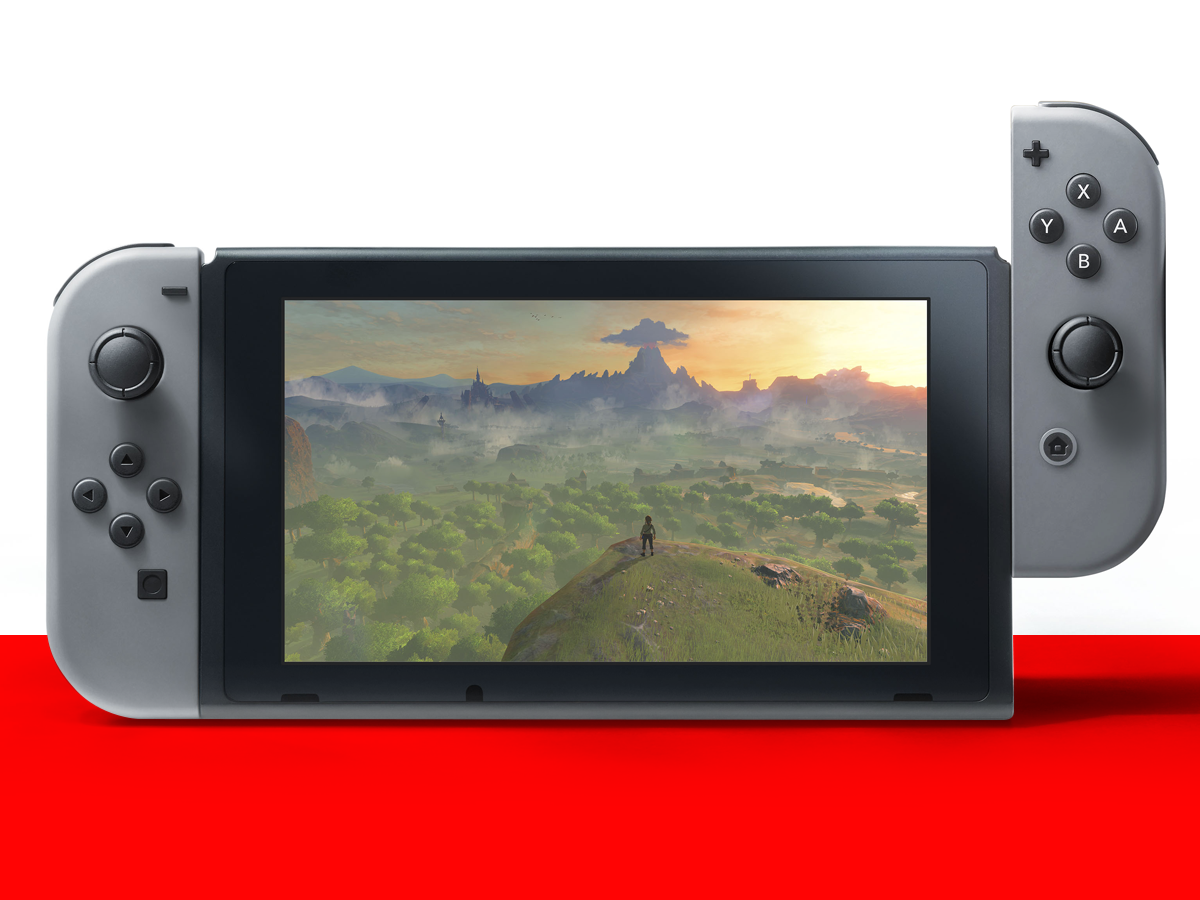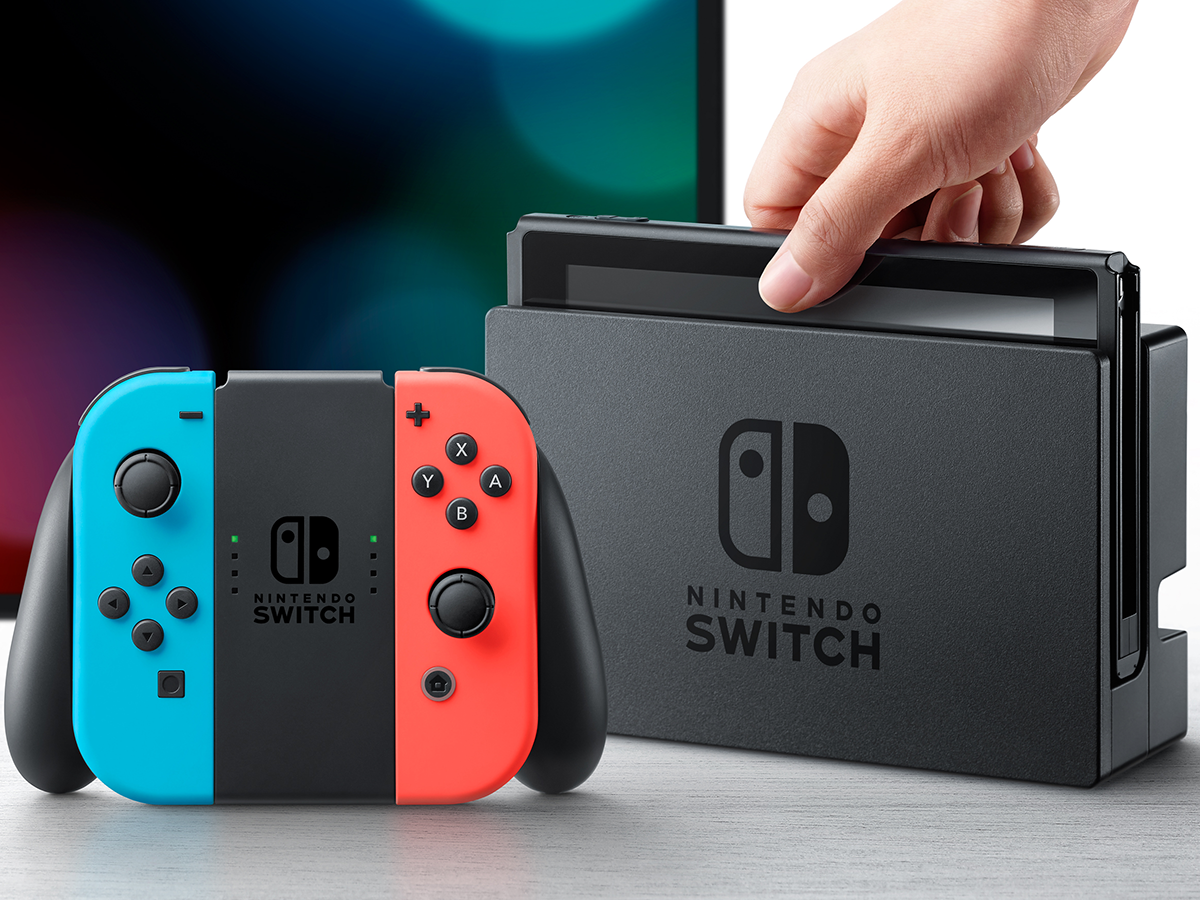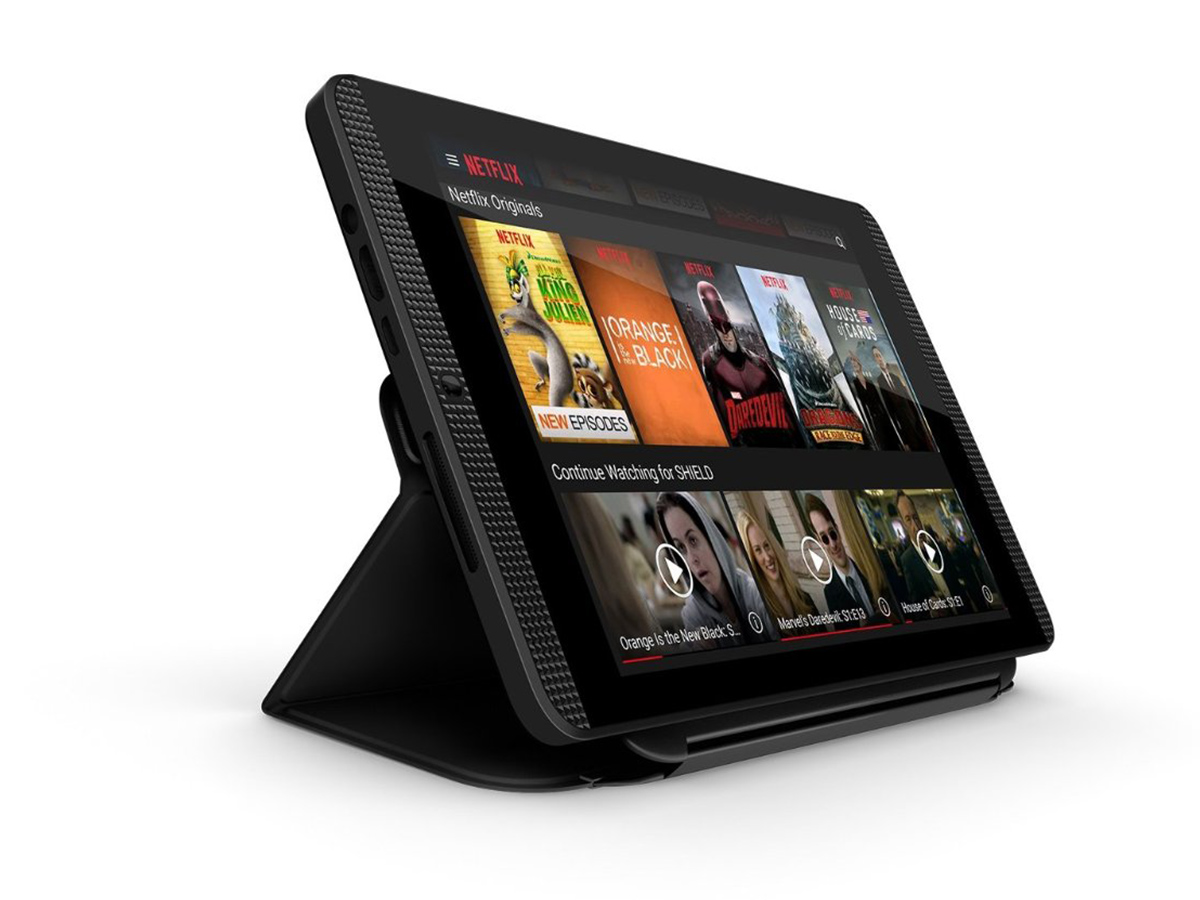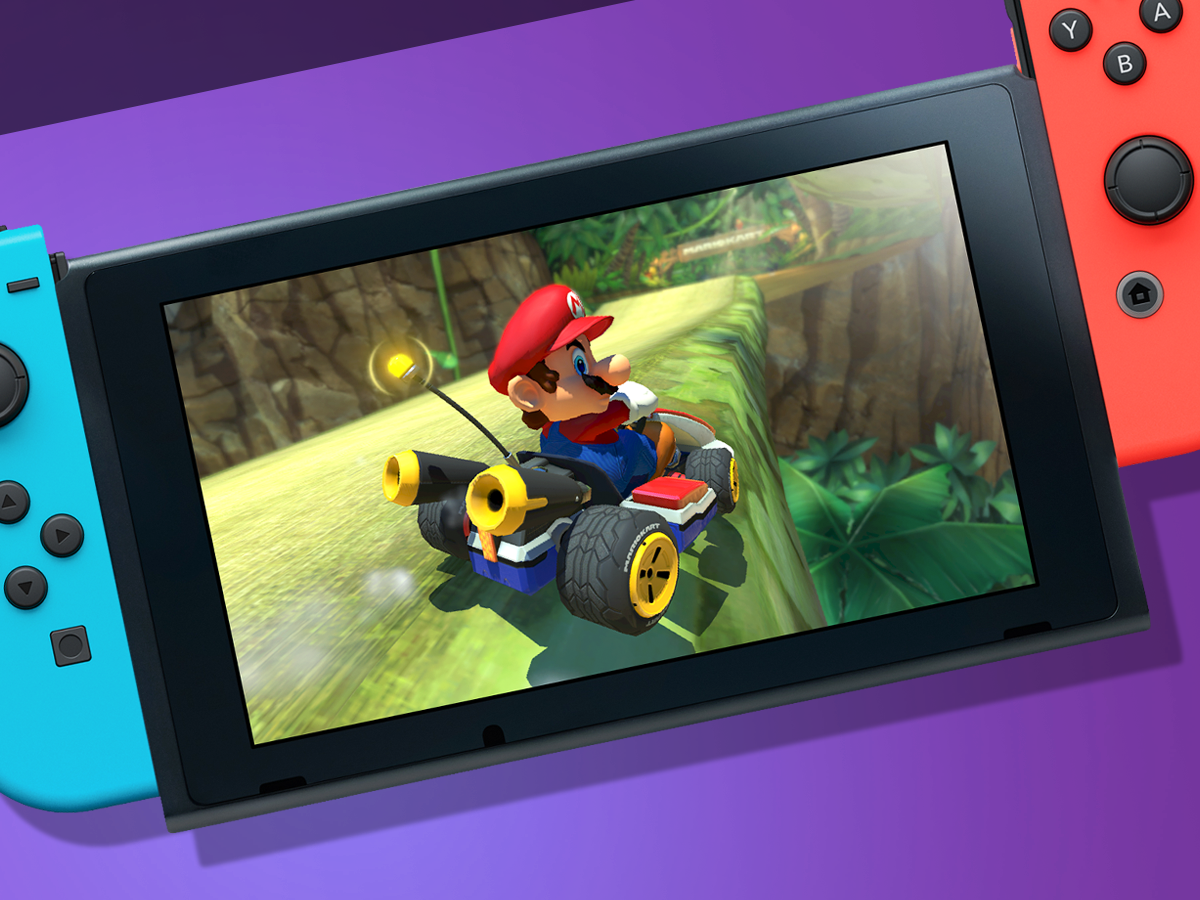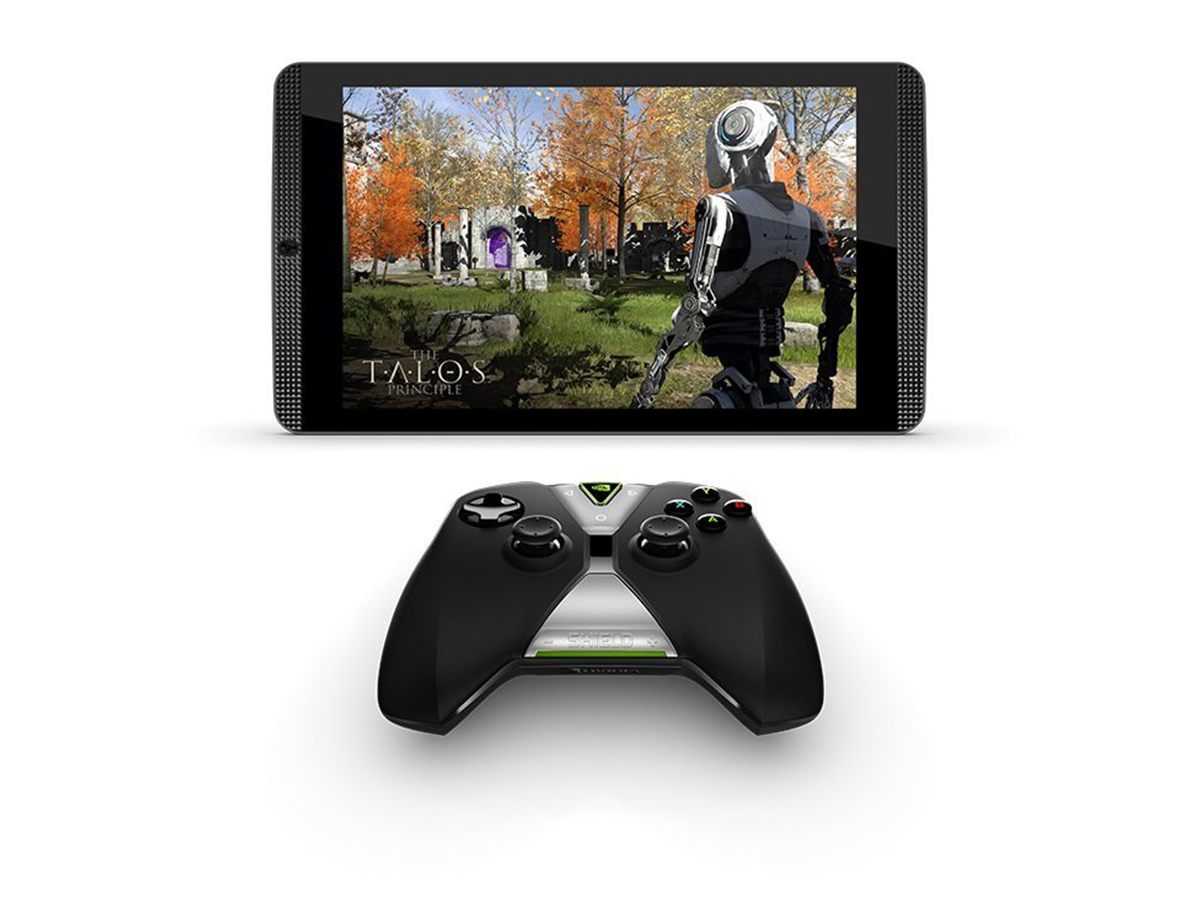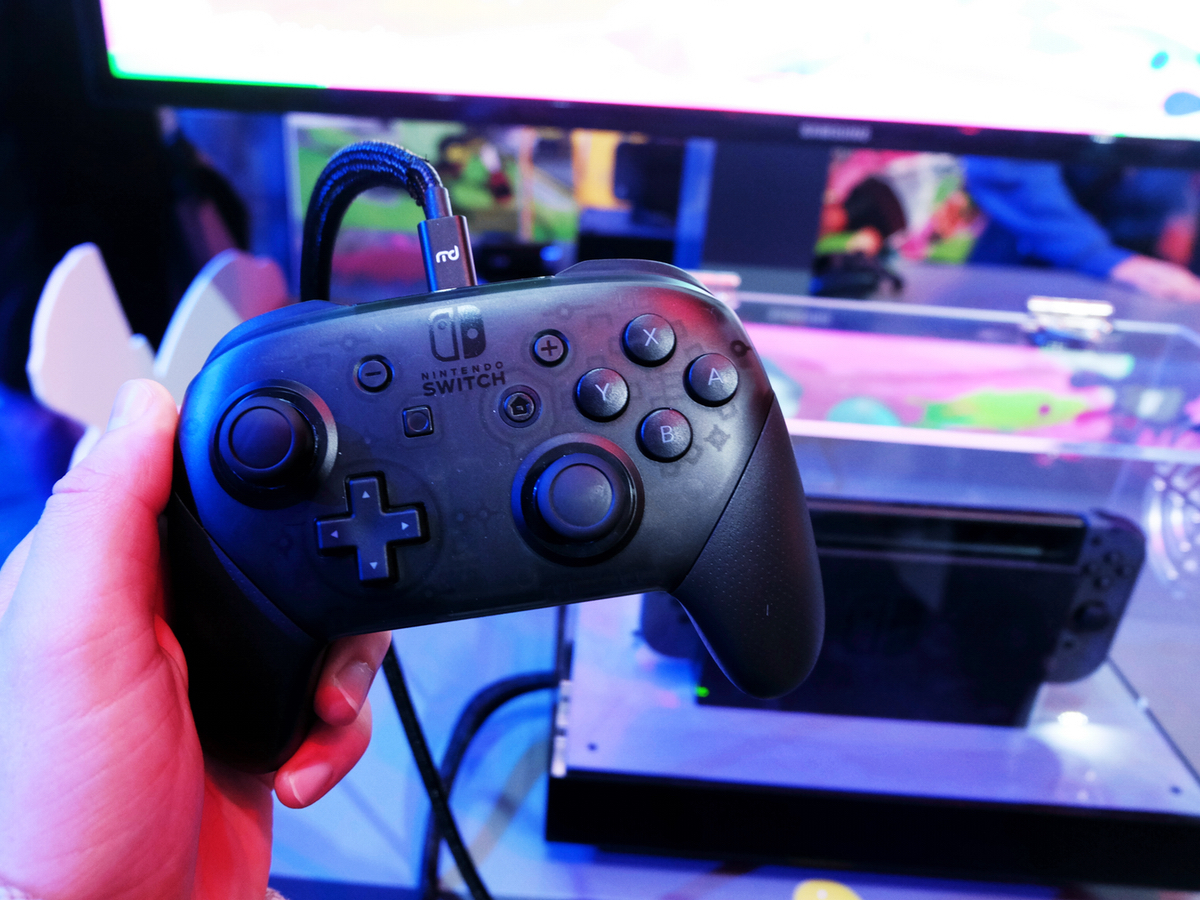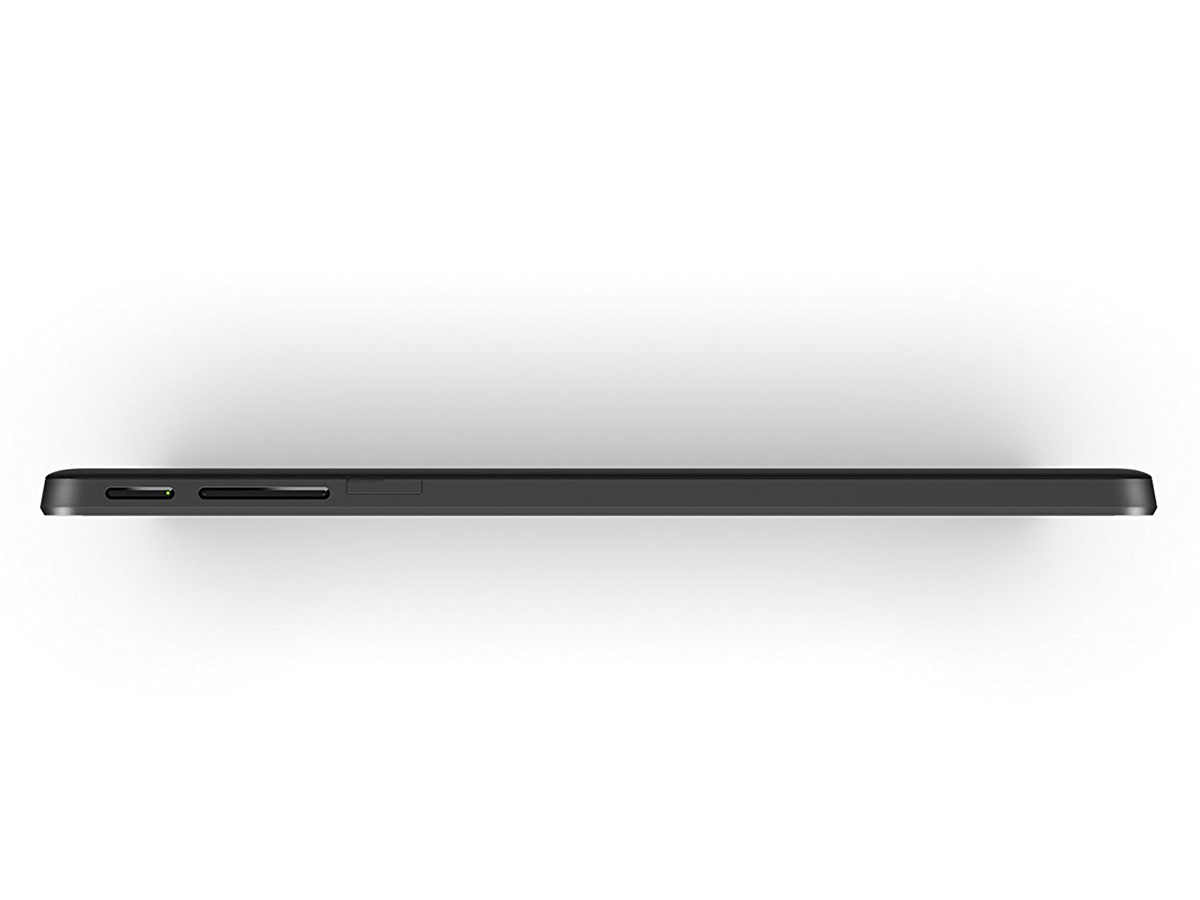Nintendo Switch vs Nvidia Shield K1: the weigh-in
Is the ageing Shield slab a better buy than Ninty’s new machine?
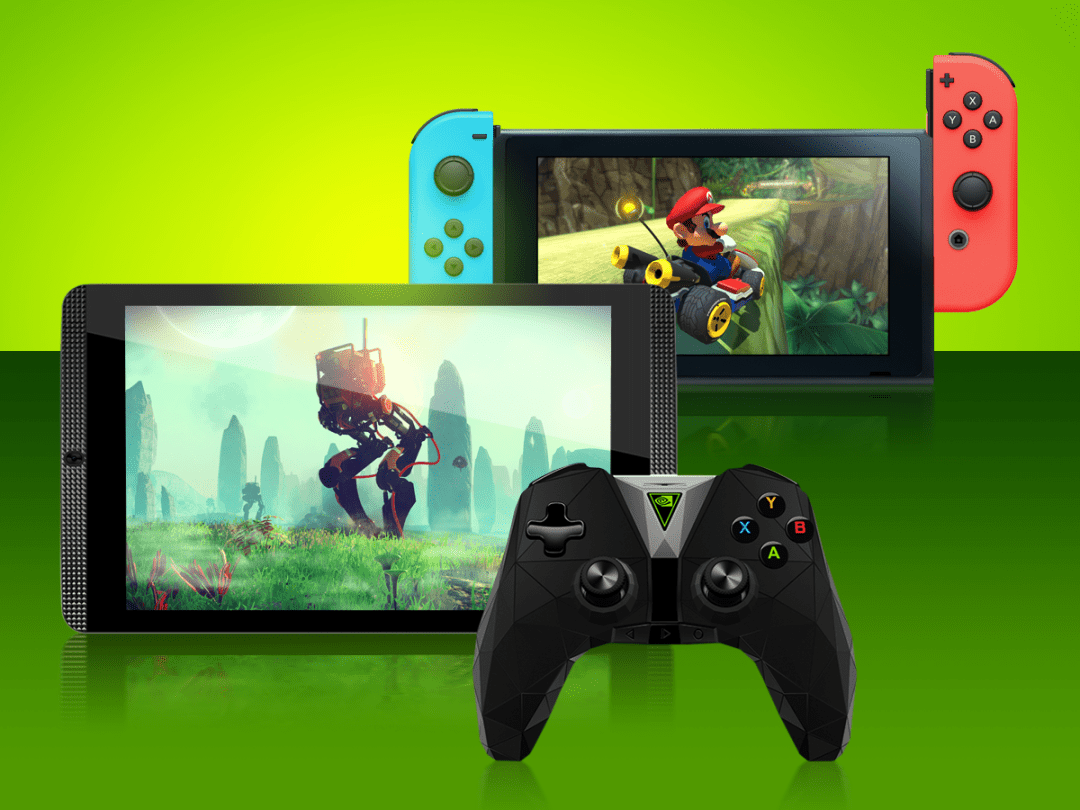
“Hang about,” we hear you say, “why are you comparing a brand new console with a gaming tablet from 2015?”
A very valid question. The answer? Nvidia’s Shield K1 was a go-anywhere gaming machine very much in the same vein as the Nintendo Switch – and a very capable one at that.
In fact, if rumours are to be believed, Nvidia recently canned an ultra-portable updated version of the Shield – tentatively dubbed the Verge – because of how close it was to the Switch in functionality and, as we subsequently learned, Nvidia hardware is inside the Switch.
So why is it worth comparing the two now? Well, while we’ve yet to properly put the Switch through its paces, we do know some of its limiting factors – namely, a meagre launch lineup and a high price tag: £280 for the console alone.
Contrast that with the Shield K1, which can be scooped up for less than £170 – saving you more than £100 over the Switch – and there could well be a fight in store.
Read on for a closer comparison between these two gaming slabs.
Nintendo Switch vs Nvidia Shield K1: Power
Nintendo machines have never been known for their power. Pitching a Switch against a PS4 would be like throwing Mario onto the track with Usain Bolt. Fun, but not exactly fair.
Both the Switch and the Shield K1, though, are meant to be about pick-up-and-play gaming, so you might expect their power potential to be similar, at least on paper.
Take one look at the Shield K1 and it’s clear – even 15 months since its release – that it’s quite the powerhouse. A quad-core Tegra K1 chip delivers 2.2GHz of processing power, paired with 2GB of RAM – and it’s speedy indeed.
Nintendo, of course, is famously coy about releasing hard specs. Most evidence suggests the chip in the Switch is a custom Tegra unit, while tests run by Eurogamer clock CPU speeds at a little more than 1GHz (across four cores). More intriguingly, it seems that graphics performance drops when the console is in tablet mode, rather than docked.
OK, so Ninty fans will say that it’s not an equal benchmark, as Switch games will be platform specific and will therefore run better on the fixed hardware – and the titles we tried at the launch event certainly ran fluidly. But we’re talking about bang-for-buck modular consoles here – and the Shield K1 walks it.
Winner: Nvidia Shield K1
Nintendo Switch vs Nvidia Shield K1: Screen and battery
When news first hit that Nintendo’s next console would be part-tablet, few new what to expect – not least, given the peculiarity of the Wii U. Thankfully, the Switch is quite the pleasant slab to use.
In essence a 6.2in tablet with controllers stuck to either side, its 720p resolution is surprisingly low, though it wasn’t noticeably poor on first usage – probably in large part thanks to the cartoonish graphics of many of the launch titles.
Battery life is similarly middling on the Switch. Depending on settings, the cell can survive for anywhere from 3.5 to 6 hours, which should cover most train journeys and short-haul flights, but it’s no gaming goliath.
What of the Shield K1? Well, it’s a proper gaming tablet with a display to match: an 8in LCD with a 1920×1200 resolution, the Shield’s screen offers solid saturation and brightness – not to mention decent viewing angles – for an LCD panel on a £170 tablet.
As for battery life, the Shield K1 packs a 5200mAh cell, the life of which again varies dependent on activity. Nvidia reckons its theoretical maximum is around 10 hours and, while it’s less in real-world conditions, the Shield will trump the Switch’s 6.
Winner: Nvidia Shield K1
Nintendo Switch vs Nvidia Shield K1: On the TV
Easily the biggest selling point of the Switch is how modular it is: stick it in the dock and you get fully fledged TV gaming that’ll have you waving Wii-style in front of the big screen.
The thing is, while games do seem to transition comfortably from tablet to telly, they’ll only do so at 1080p. Again, this won’t matter that much if what you want is fun, cartoonish games to entertain – but it does limit the Switch’s credentials as a future-proof platform, at least on resolution.
If you want proper big screen gaming from a portable system, the Shield K1 is the one to opt for. Yes, cabling it in with a Mini HDMI lead isn’t as neat as the Switch’s bundled dock, but it will kick out a 4K resolution.
That said, there’s more to living room fun than pixels – and the Ninty box is much closer to a home console than the Shield. While the latter does offer multi-controller support for some titles, the Switch’s raison d’etre is getting everyone involved with the Joy Cons (though additional sets will cost £75). This one’s too close to call.
Winner: Draw
Dedicated to telly › Nvidia’s new Shield TV is a 4K HDR streamer that’ll talk to Google
Nintendo Switch vs Nvidia Shield K1: On the go
What about as travel companions? Both devices claim to be competent portable players, regardless of what else they can do, and both approach on-the-go gaming differently.
The Switch can be played as a tablet or as something of a hybrid, sandwiched between the controllers. It’s got a pleasant weight to it, with the controls offering a surprisingly ergonomic experience, and it’s just small enough to slip into a satchel without weighing it down. Kick out the stand and you’ve got a device that’ll sit happily on a fold-down plane table.
We didn’t get chance to test the speakers at the launch event, but there are bigger concerns with the Switch’s tablet credibility. If you’re reading this then the idea of propping up an iPad or, indeed, a Shield K1 and button-mashing a Bluetooth controller probably isn’t an alien one. The switch basically sticks the controls on either side, asks you to pay rather a lot for it then delivers fewer games.
As for the Shield, well, it’s a tablet bundled with a Bluetooth controller – albeit a very capable one. Android games play like, well, Android games, while the controller adds versatility – though you’ll ideally need a firm, flat surface to do it justice.
Both are similarly built slabs, though the Shield K1 is a little chunkier and less svelte – not to mention a fingerprint magnet. Still, stellar speaker performance helps to distract from this.
Which is better for the road? Price aside, the Switch is a happier beast in the hands and feels naturally closer to something like a PS Vita than a hulking tablet. Preference is king but, for us, the Switch just steals it.
Winner: Nintendo Switch
What to play › The 40 best games on Android right now
Nintendo Switch vs Nvidia Shield K1: Software and games
For a long time, it’s been platform-specific games that have kept Nintendo consoles afloat. There’s a kitsch sweetness to them that’s not replicable on other consoles and, to some, the idea of playing those games on anything other than a Ninty box is unthinkable.
That doesn’t really work with the Switch, though, because so few games have been announced, let alone made available at launch. Sure, there are repackaged Wii U titles, but for original content you’re limited to 1-2-Switch, Arms and Super Mario Odyssey, which don’t all have release dates.
The Shield K1, on the other hand, offers no shortage of gaming material. With full Play store support, it’ll run any and all Android games. What’s more, download the Nvidia Games app and you’ll get access to exclusive games.
Neither the Switch nor the Shield K1 offer mobile data connectivity but the Shield can stream a selection of full-fat PC games from the cloud over Wi-Fi. Sure, it’s niche and needs a speedy connection, but the much-vaunted GeForce GTX 1080 graphics streaming wizardry of the K1 gives it a powerful kudos that the Switch simply can’t match – even with the pull of Mario behind it.
Winner: Shield K1
Nintendo Switch vs Nvidia Shield K1: Controls
Controls, perhaps more than any other single criterion, are divisive. Some prefer buttons, others analogue sticks. Some can’t stand tablet gaming, others prefer its accessibility.
So it is between the Switch and the Shield K1. The K1 can be used both as a tablet and with a gamepad, while the Switch can be controlled in no fewer than five ways.
Which is better? Well, for sheer versatility there’s no question that it has to go to the Switch – though that is to ignore the question of price.
With a Pro Controller costing upwards of £65 and additional Joy Con sets more expensive still, achieving the full complement of Switch inputs requires pretty deep pockets
On paper, though, more gamers are likely to find a way of controlling the Switch that suits, than with the Shield.
Winner: Nintendo Switch
Play options › The 5 ways you can control the Nintendo Switch
Nintendo Switch vs Nvidia Shield K1: Verdict
As always, a truly definitive verdict will have to wait until we’ve run full tests on both devices, and even more than that, which one you should go for will be heavily influenced by how much of a Nintendo fan you are.
If you’re desperate to play the next Mario game, nothing but the Switch will do. It’s a much more focused games machine, too, not a years-old Android tablet with a gaming bent.
There is, though, an elephant in the room and it’s something that’s been running throughout this balancing exercise: price.
The Switch is no pocket money steal at £280 – and that’s without games or additional peripherals. Compare it to the Shield K1, with its greater processing power, better screen resolution and a far broader software offering, at just £170, and the on-paper battle starts to sway Nvidia’s way.
Perhaps Zelda: Breath of the Wild will be so good that we’ll reverse this verdict come early March, but for now the Shield’s extra power, flexibility, resolution and broad appeal make it the one we’d recommend to those looking for serious gaming on the go.
Winner: Nvidia Shield K1
